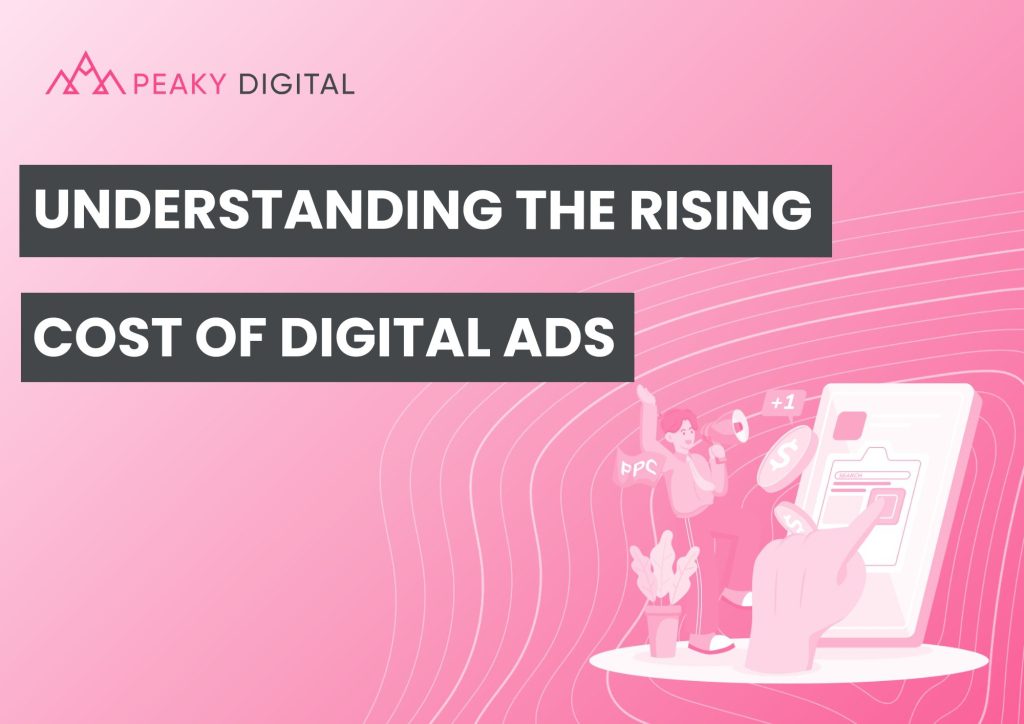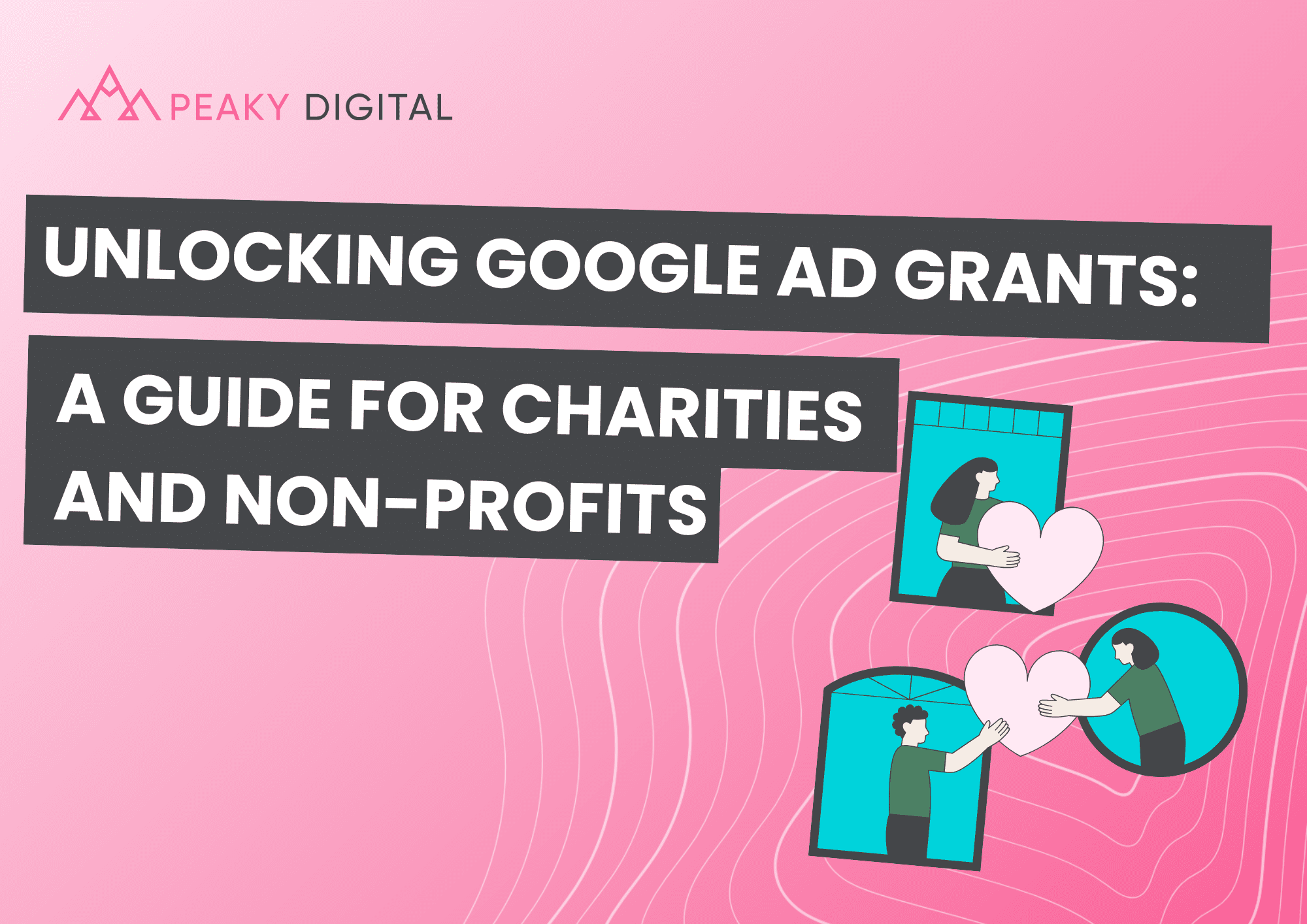
The Benefits of Google Manufacturer Centre
Apr 1, 2025
In today’s fast-paced digital world, ensuring your brand is represented accurately across online platforms is crucial….
by Natalie Temple
Mar 26, 2025

Nope, you didn’t imagine it. Your digital ad costs are on the rise. But don’t worry, we’ll help you make some sense of it.
In digital marketing, there’s a constant need to quickly evolve to suit new technology, industry trends, and a wide range of other factors. However, one trend is very clear at the moment—the cost of paid advertising is rising. As businesses attempt to navigate the various changes, it’s more important than ever to understand the factors influencing cost increases to develop fruit-bearing strategies now and in the future.
Google Ads has been a cornerstone of marketing for a long time and helps businesses connect with their audience in a more precise and targeted way. But lately, things have been a bit all over the place with costs and spending trends. As consumer behaviour shifts and competition heats up for those all-important keywords, the price you pay for ads can swing quite a bit.
Keeping up with these changes can be tricky, but staying on top of trends is critical if you hope to get the most out of your ad budget.
Recent data shows a significant rise in cost-per-click (CPC) rates for Google Ads, which reflects the growing competition across all sectors. In 2023, the CPC for Google’s Search Network reached £2.38, up from £2.07 in 2021. Similarly, the Display Network also saw its CPC climb from £0.48 to £0.55 over the same period.
These numbers aren’t just about costs—they tell a broader story and paint a picture of the modern digital marketplace, where businesses are fighting tooth and nail to engage their customers. This increased competition is reflected in Google’s ad revenue, which surged from £134.81 billion in 2019 to £237.86 billion in 2023. That’s an almost 76% jump! This not only shows you how crucial paid ads are but also how valuable Google’s advertising platform has become for modern organisations.
For businesses, it’s a necessity to regularly analyse and adapt their approach to ad strategies. As reaching customers becomes more expensive, it’s invaluable to fine-tune campaigns to maximise your ROI. The internet has swiftly become an environment where every click counts, which means smarter targeting and more efficient spending make all the difference.
Several factors are driving up the costs of Google Ads these days. First and foremost, increased competition is a major player. As more businesses catch on to the power of online advertising, especially on Google, the scramble for ad space heats up, pushing up those CPC rates. For instance, we’ve seen a 9% jump in search CPCs and a 17% increase in overall ad spending recently.
The COVID-19 pandemic also had a big impact, as it did with pretty much everything at that time. Back in 2020, the pandemic led to a temporary dip in CPC rates because many advertisers cut back their budgets in an attempt to cut operating costs and naturally, competition softened. But as the world started to recover, CPC rates not only bounced back to pre-pandemic levels but maintained their upward momentum, driven by surges in competitive bidding and hugely increased advertiser activity.
Google’s continual introduction of new ad formats and features, like Performance Max and Demand Generation campaigns, has a huge impact on the rise and fall of costs. While these innovations do indeed offer more sophisticated advertising solutions as well as fresh opportunities, they can also impact CPC rates as advertisers tweak their approaches to implement new tools.
Additionally, Google’s machine learning algorithms play a crucial role in improving ad performance by allowing for real-time bid optimisation. While this can boost return on investment, it may also contribute to higher PPC costs, as the system consistently adjusts bids to deliver the best results.
Many industries experience fluctuations in demand throughout the year, and these seasonal changes in demand are another important factor affecting CPC rates. With this in mind, it’s crucial for marketers and businesses to adjust their budgets and strategies accordingly to manage costs effectively.
Additionally, Google’s focus on local search and mobile users introduces more cost considerations. Those targeting local or mobile audiences may encounter changes in CPC based on user behaviour and competition. Again, ensuring you’re aware of factors such as this and adapting appropriately can prove to be incredibly valuable for efficiently managing your ad budget.
In recent years, Meta (Facebook)—thanks to its vast user base and sophisticated targeting capabilities—has continued to be a leading force in digital ads. Meta’s cost metrics, such as CPC and CPA, show important trends and fluctuations between 2023 and 2024. While CPC has generally decreased, CPA has risen, demonstrating a variety of underlying factors that influence the metrics.
While there are several reasons for Meta’s decreasing CPC, a key factor is its ongoing efforts to improve its targeting algorithms. Much like Google, Meta’s use of advanced machine learning helps them improve their ability to put ads in front of people who are genuinely interested. This more precise, targeted approach means fewer irrelevant clicks and an overall more efficient use of advertising budgets. As more ads reach engaged audiences with minimal wasted ad spend, CPCs will drop.
It’s also important to note the increase in advertising opportunities across Meta’s various platforms. They’ve expanded their ad inventory by introducing new ad placements like stories, in-stream videos, and other formats. This increase in the amount of space available for ads, combined with an ever-rising number of users, creates a more competitive environment—resulting in businesses being able to secure ad placements at lower costs.
Additionally, Meta’s focus on developing engaging ad formats—such as video ads and carousel ads—has significantly improved user interaction. So ads that are visually appealing and encourage engagement are likely to attract more clicks at a lower cost. This enhancement in user interaction, driven by creative ad formats, further contributes to a more cost-effective approach to paid advertising.
The rise in sophisticated bidding strategies has also helped bring down CPCs. Businesses utilise techniques like bid caps and automatic bidding to optimise their spending, which allows for better budget management and prevents overspending to keep CPCs competitive.
Although the cost per click has decreased, there’s been a noticeable rise in the cost per acquisition. This indicates higher conversion standards, with businesses now focusing on high-quality leads rather than simply increasing lead volumes. The classic “quality over quality” approach. As the criteria for valuable conversions become stricter, the cost of securing each qualified lead naturally increases.
Also, the complexity of sales funnels, especially in B2B and high-value B2C sectors, is worth consideration. Many industries are dealing with more intricate sales processes that involve several (often too many) touchpoints before a conversion is even made. Managing these complex funnels requires more time and resources, which leads to an overall rise in CPA.
In high-value sectors like legal services, healthcare, and real estate, the boost in competition is driving up the CPA. As more businesses fight for a share of these highly profitable markets, the battle for customers gets more intense. To stay ahead of competitors, businesses should be prepared to invest more, pushing up CPA through competitive bidding.
Similarly, in industries with significant Customer Lifetime Value (CLV), such as finance and SaaS, a higher CPA is often considered as a strategic investment. The thought behind this is simple—while CPA may rise, the potential return from acquiring a single high-value customer is worth its weight in gold. This approach is a long-term strategy where there’s a real drive and focus on securing customers who bring lots of value over time, which justifies the increased upfront costs.
As advertising costs continue to climb, businesses need to rethink their strategies to stay competitive. To help, we’ve put together a few straightforward tips and some practical advice to help you navigate these challenges effectively now and as new trends emerge.
Just because ad costs are on the up, it’s doesn’t mean you necessarily have to cut back your budget, but just allocate it smartly. Make the most of analytics and AI tools to keep tabs on your ad performance while conducting regular A/B testing and predictive analytics. This will guide you and help to pinpoint which ad creatives, audience segments, and bidding strategies are truly delivering results.
When your cost per acquisition (CPA) is increasing, it’s more important than ever to target high-quality leads. To identify leads that meet your standards, consider implementing a lead scoring system. This assesses prospects based on their engagement, behaviour, and how well they align with your business.
Additionally, make good use of CRM tools to monitor interactions and personalise your follow-ups. By tailoring your interactions to each lead’s specific interests and needs, you massively boost your lead nurturing efforts and your chances of converting prospects into loyal customers.
Instead of relying on one advertising platform, think about diversifying your approach with multiple platforms that connect with a broader audience. By branching out and experimenting with a range of channels, you reduce your dependence on any single source of information. After all, what happens if your singular chosen ad platform goes down for the day?
Consider exploring newer platforms or unconventional methods, such as teaming up with influencers or diving into podcasts. These fresh avenues can offer exciting new opportunities for engagement and help you reach your audience in innovative ways.
While paid ads are vital, don’t underestimate the power of organic growth. Investing in SEO, content marketing, and social media engagement builds a strong foundation for long-term success. These are tried and tested strategies that not only drive traffic but also enhance your brand’s credibility and reduce your reliance on paid ads. Plus, these other crucial areas of marketing are brilliant spaces to learn, network, and develop creative multi-channel campaigns.
Digital marketing is a whirlwind of constant change, driven by rapid advancements in technology, evolving consumer preferences, and frequent algorithm updates. To keep up, it’s essential to stay current with the latest trends and the most effective advertising formats for your needs. Regularly checking industry news, attending webinars, and exploring fresh research will help you stay ahead of the curve and capitalise on new opportunities. Put simply, you need to be proactive and not reactive if you hope to stay ahead of your competitors.
With digital ad costs on the up, it’s natural to feel a bit concerned. But don’t worry, it’s important to look at these increasing costs as a chance to be creative and shake up your approach. Rather than sticking to conventional methods, dive into your data, test out new ideas, and be inspired by new trends and even competitor campaigns. Whether it’s diversifying your ad channels, exploring emerging platforms, or investing in organic growth, there’s a lot you can do to turn these costs to your advantage.
As we mentioned, it’s crucial to be proactive (not reactive) and adaptable when these types of shifts occur. So keep experimenting, stay in the know, and don’t hesitate to embrace bold and innovative strategies. Digital marketing is evolving rapidly and shows no signs of slowing, but with the right approach, you can transform the headache of rising costs into a catalyst for success.
Brand awareness, business growth or a bigger and better ROI, our team of digital specialists are here to help you get the most from your brand. Let's start a new partnership today.

Apr 1, 2025
In today’s fast-paced digital world, ensuring your brand is represented accurately across online platforms is crucial….

Apr 1, 2025
Imagine having up to $10,000 of free advertising every single month to shout about your cause. …

Mar 26, 2025
Nope, you didn’t imagine it. Your digital ad costs are on the rise. But don’t worry,…
Notifications